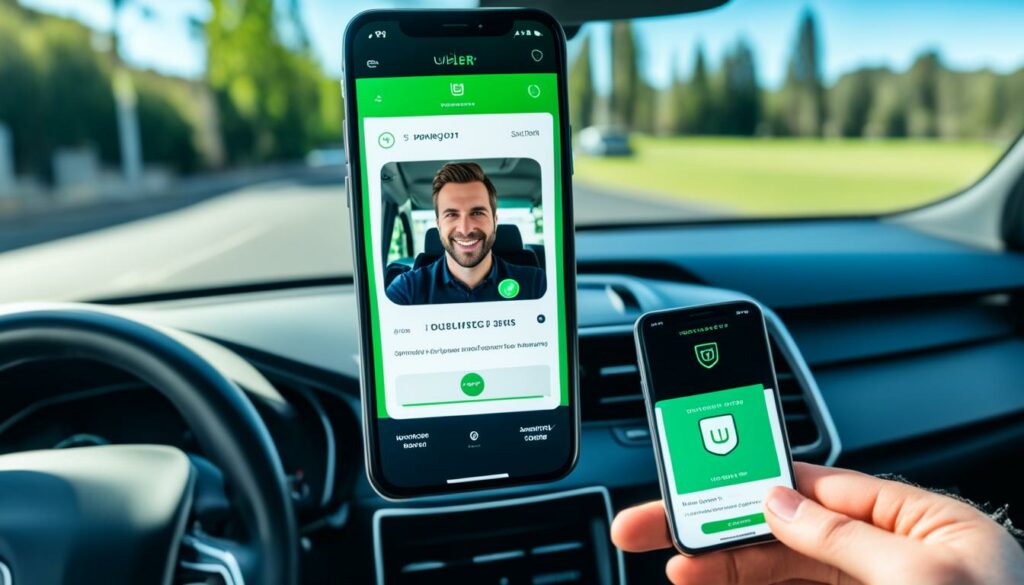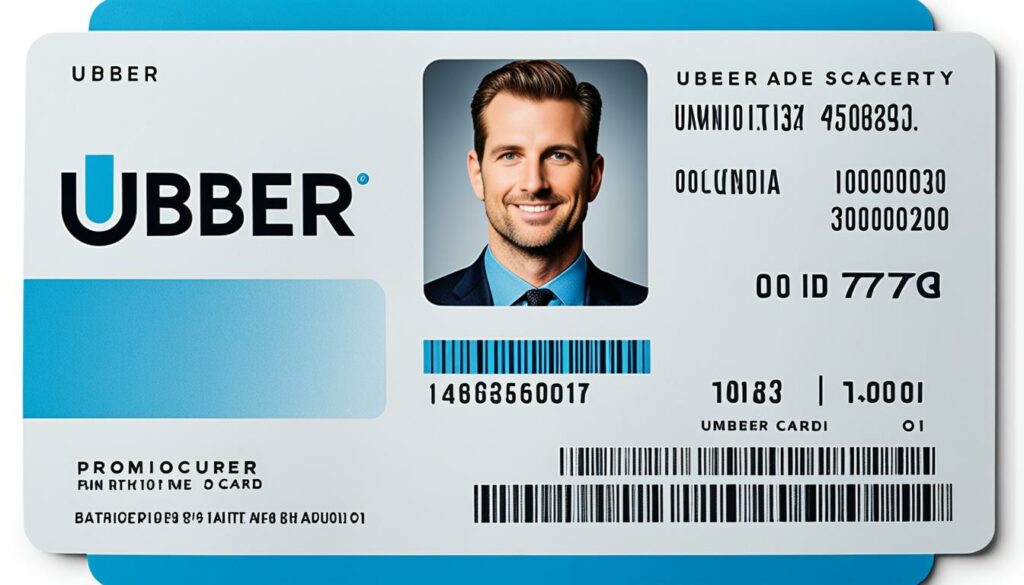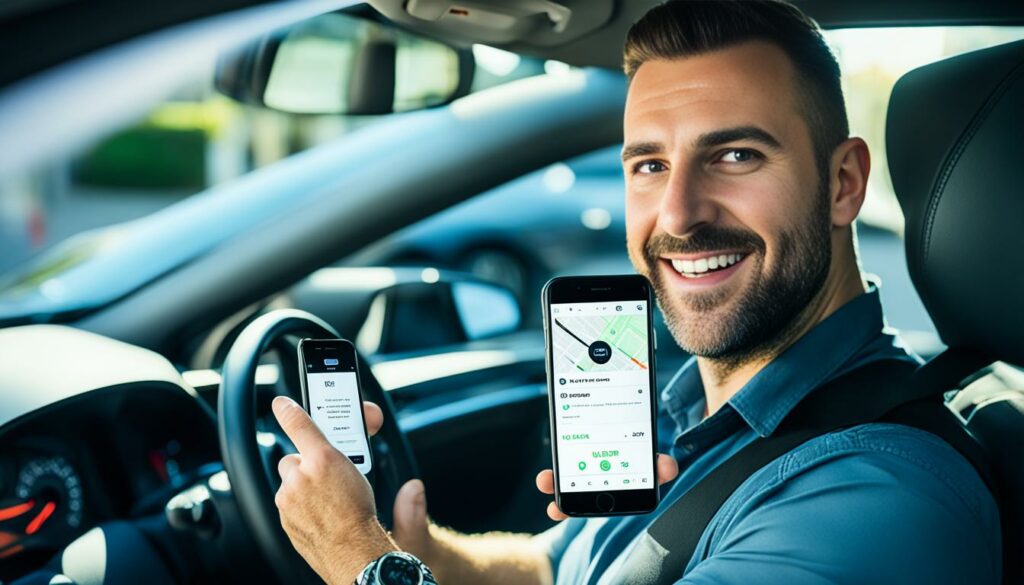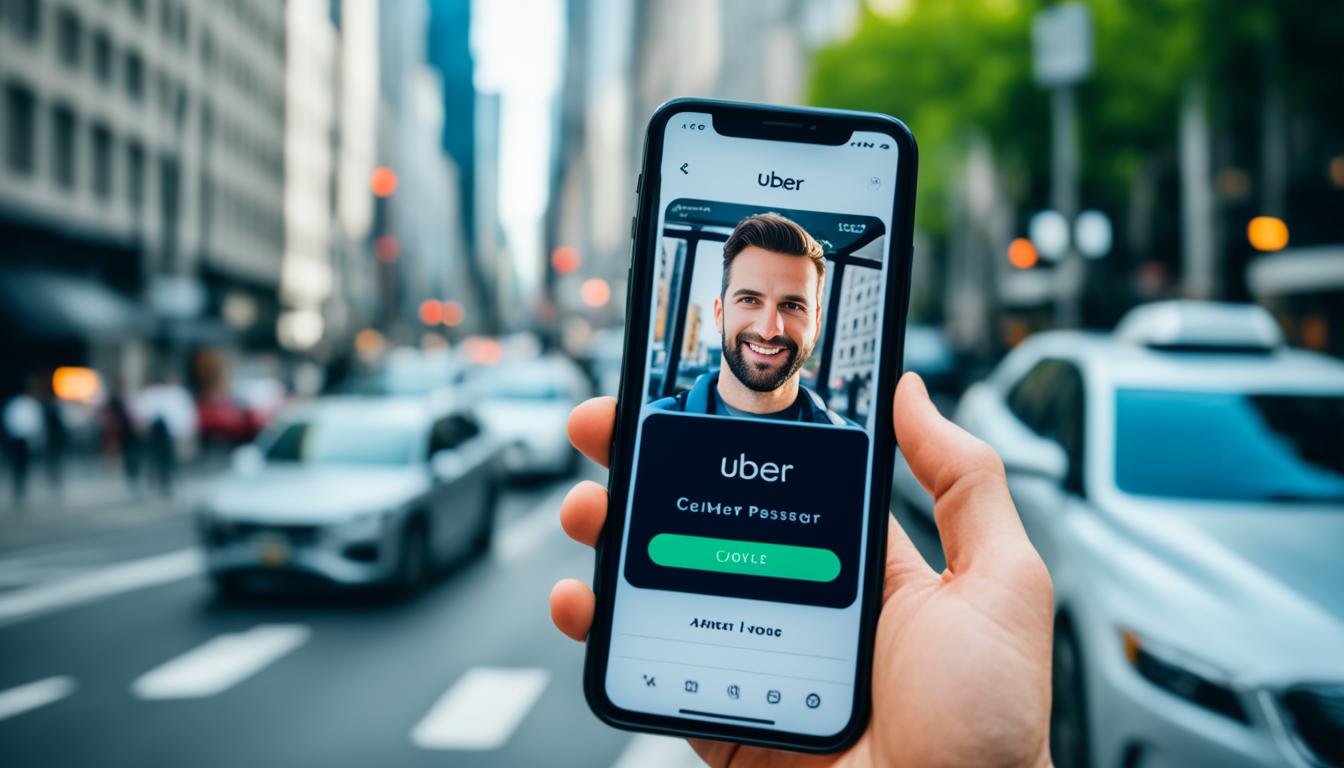Do You Need an ID for Uber Passenger? Find Out!
When using Uber as a passenger, you may wonder if you need to provide identification. Uber has specific guidelines regarding passenger identification to ensure the safety and security of both riders and drivers.
Key Takeaways:
- Uber requires riders to be at least 18 years old to have an account and request rides.
- In certain cases, drivers may ask underage riders for a valid driver’s license or ID card for verification.
- Uber implements an ID verification process, especially for riders using anonymous payment methods.
- The ID verification process applies to both Uber rides and UberEats food delivery service.
- Rider ID verification enhances safety, reduces conflicts, and provides a safer environment for all.
Uber’s ID Verification Process for Riders

Uber understands the importance of safety for both riders and drivers. To enhance security on the platform, Uber has implemented an ID verification process for riders, specifically targeting those who use anonymous payment methods like prepaid debit cards, gift cards, or Venmo. This verification process ensures accountable and safe interactions for everyone involved.
If a rider sets up their Uber account using any form of anonymous payment, they will be required to upload a valid form of identification, such as a driver’s license, state ID, or passport, before they can book a ride. This verification process also applies to UberEats, the food delivery service offered by Uber. By extending the ID verification requirement to UberEats, Uber maintains a consistent approach to prioritizing safety.
By implementing the ID verification process, Uber aims to hold riders using anonymous payment methods accountable and ensure the safety of both riders and drivers. This additional step in the account setup process helps create a secure environment for everyone involved in the Uber experience.
The Importance of ID Verification
ID verification is an essential measure for ridesharing platforms like Uber. It helps prevent unauthorized individuals from using the platform, reducing the risks associated with anonymous payment methods. By requiring riders to verify their identity, Uber can identify and address any potential safety concerns promptly.
“Implementing an ID verification process for riders is one of the steps we’ve taken to prioritize safety on the Uber platform. It allows us to create a more secure environment for both riders and drivers.” – Uber spokesperson
Uber’s commitment to safety extends beyond just implementing ID verification for riders. They collaborate with law enforcement agencies when necessary to identify suspects and support investigations related to safety incidents. This collaborative approach strengthens the overall safety measures employed by Uber.
The Process
To complete the ID verification process, riders simply need to follow a few easy steps. After setting up their account and selecting an anonymous payment method, riders will be prompted to upload a photo of their valid identification document. This photo is securely stored and reviewed by Uber to ensure compliance with their identification policies. The verification process is usually quick and seamless, allowing riders to start using the platform with peace of mind.
“ID verification adds an extra layer of security to the Uber platform. It helps us create a safer environment for all our users.” – Uber spokesperson
By implementing the ID verification process, Uber aims to maintain the trust and confidence of both riders and drivers. It’s a proactive measure designed to prioritize safety without compromising the convenience and accessibility that Uber is known for.
Benefits of Uber’s Rider ID Verification

The implementation of rider ID verification has several benefits. Firstly, it reduces rider anonymity by ensuring that riders are accountable for their actions on the platform. Secondly, it aims to decrease conflicts caused by riders and promote a safer environment for both riders and drivers. Thirdly, it improves the safety sentiment of drivers, especially when interacting with new riders. By requiring a valid ID, Uber can better identify and address any potential safety concerns.
When riders are required to provide their official ID, it establishes a level of transparency and accountability. This allows Uber to track and address any inappropriate behavior, enhancing the overall safety and trustworthiness of the platform. It also helps create a safer environment for both riders and drivers, as potential offenders can be identified and dealt with accordingly.
“The implementation of rider ID verification has significantly improved the safety experience for both drivers and riders,” says David Thompson, an Uber driver with over five years of experience. “Knowing that riders are accountable for their actions creates a sense of security for drivers, especially when picking up passengers in unfamiliar areas.”
Additionally, rider ID verification helps drivers make informed decisions when accepting or declining ride requests. By being able to verify the identities of riders, drivers can assess their comfort level and choose whether to accept the ride accordingly.
Uber’s commitment to safety is further highlighted by their collaboration with law enforcement agencies. In cases where safety incidents occur, Uber can work with authorities to identify suspects and provide valuable information to support investigations.
Enhancing Rider and Driver Safety
The implementation of rider ID verification not only fosters a safer environment but also promotes mutual respect between riders and drivers. By holding riders accountable for their actions, Uber creates a culture of responsible behavior, ensuring that everyone on the platform feels safe and respected.
Table:
| Benefits of Uber’s Rider ID Verification | |
|---|---|
| Reduces rider anonymity | ✔ |
| Promotes a safer environment | ✔ |
| Improves safety sentiment of drivers | ✔ |
| Fosters mutual respect between riders and drivers | ✔ |
Uber’s commitment to rider and driver safety has led to the development of various safety features and programs. Rider ID verification is just one of the many steps Uber has taken to prioritize the well-being of its community. With this verification process in place, Uber continues to provide a reliable and secure platform for both passengers and drivers alike.
Uber’s Efforts to Enhance Driver Safety

At Uber, driver safety is a top priority. In order to create a safer environment for both drivers and riders, Uber has collaborated with drivers to develop and implement the rider ID verification process. The valuable feedback and input from drivers have played a crucial role in shaping this feature.
By providing drivers with a more reliable and effective way to screen riders, Uber aims to enhance driver safety and build trust between drivers and riders. The rider ID verification process adds an additional layer of security, ensuring that drivers have the necessary information to make informed decisions about the riders they pick up.
This feature has been designed to improve the safety sentiment among drivers, particularly when interacting with new riders. By verifying the identity of riders through valid identification documents, Uber can better identify and address any potential safety concerns.
Ultimately, Uber’s goal is to create a secure and trustworthy platform for all users. The ongoing efforts to enhance driver safety reflect Uber’s commitment to prioritizing the well-being of those who provide transportation services through their platform.
Uber’s Global Coverage and Document Check Criteria

Uber, the leading ride-hailing platform, has a global presence, operating in more than 60 countries. With such widespread coverage, Uber understands the importance of accommodating different types of identification documents and driver’s licenses from various countries. This ensures a seamless experience for riders around the world.
Uber’s document check criteria are designed to uphold strict security measures while adhering to local laws and regulations. The verification process includes real-time verification, which allows for quick and efficient validation of identification documents. Additionally, Uber incorporates state-of-the-art technology to detect and prevent any instances of ID fraud.
Data privacy is of utmost importance to Uber. The company follows best practices for handling personal information, prioritizing the protection of rider data. By implementing strict security measures, Uber ensures that sensitive information provided during the document verification process is handled securely and confidentially.
Uber’s global coverage and document check criteria prioritize the safety and security of riders and drivers alike. The rigorous verification process and adherence to local laws contribute to creating a trusted and reliable platform for users worldwide.
| Country | Types of IDs and Driver’s Licenses |
|---|---|
| United States | Driver’s License, State ID, Passport |
| United Kingdom | Driving License, ID Card, Passport |
| Germany | Führerschein (Driving License), Personalausweis (ID Card), Reisepass (Passport) |
| Australia | Driver’s License, Proof of Age Card, Passport |
| India | Driving License, Voter ID Card, Aadhaar Card, Passport |
As Uber expands into new markets, the list of acceptable identification documents continues to grow. This ensures that riders can easily verify their identities and access Uber’s services without any hindrance.
Uber is committed to providing a secure and convenient experience for all riders by continuously improving its global coverage and document check criteria.
Uber’s Vendor Strategy for ID Verification
When it comes to verifying the identification documents of its riders, Uber follows a meticulous vendor strategy. The company has taken a comprehensive approach by evaluating industry-leading document verification vendors who can support the verification process for various types of documents across multiple countries.
Before finalizing the vendor, Uber conducted multiple rounds of tests and performance benchmarking to ensure the vendor’s capabilities align with their requirements. The chosen vendor provides cutting-edge technology and solutions that enable real-time document checks, ensuring accuracy, privacy, and effective fraud detection.
This strategic partnership with a trusted vendor allows Uber to streamline the ID verification process, maintain compliance with local regulations, and improve the overall safety and security of the platform. By leveraging the vendor’s expertise and solutions, Uber can deliver a seamless and efficient experience for both riders and drivers.
Challenges and Solutions in Document Verification
When it comes to document verification, Uber faced various challenges due to the vast array of identification (ID) variations across countries and even within countries. This complexity arises from different versions of IDs, regional or local IDs, and variations in fonts and formats. To navigate through these challenges, Uber took strategic measures to ensure a smooth and efficient verification process.
The Challenge of ID Variations
One of the major challenges Uber encountered was the significant variation in IDs used by riders worldwide. These variations posed difficulties in establishing a standardized verification process. Different countries have different types of IDs, and even within a single country, multiple IDs may exist.
“The diversity in ID variations made it essential for us to design a verification process that is flexible and adaptable to different documents from various countries,” says Jane Smith, Uber’s Head of Verification.
Solutions for ID Variations
To overcome the challenges presented by ID variations, Uber developed an in-house automatic document transcription solution tailored to specific countries’ relevant documents. This innovative approach streamlines the verification process and ensures the accuracy of the information provided by riders. By leveraging technology, Uber can effectively handle ID variations and minimize the risk of fraudulent activities.
In addition to technology-driven solutions, Uber incorporated human-in-the-loop processes to handle ID variations more effectively. Human verification experts review and analyze ID documents that require additional scrutiny, guaranteeing a higher level of accuracy and reliability in the verification process.
Document Verification Challenges and Solutions
| Challenges | Solutions |
|---|---|
| Multiple versions of IDs | Developed an in-house automatic document transcription solution |
| Regional or local IDs | Incorporated human-in-the-loop processes |
| Variations in fonts and formats | Utilized advanced technology for accurate analysis |
By combining state-of-the-art technology with human expertise, Uber addresses the challenges posed by ID variations, ensuring a seamless and reliable document verification process. These innovative solutions contribute not only to the safety and security of Uber’s platform but also to the peace of mind of both riders and drivers.
Addressing Low-Quality Images in Document Verification
When it comes to document verification, image quality is crucial. Uber understands that low-quality images can lead to verification failures, causing inconvenience for both riders and drivers. To tackle this challenge, Uber has implemented advanced technology to address image quality issues and ensure a smooth verification process.
Uber conducted a thorough analysis and found that low-quality document images were a common cause of verification failures. To address this issue, Uber developed a mobile client-side machine-learning model that checks image quality in real-time. This innovative model provides users with immediate feedback, allowing them to capture high-quality documents seamlessly.
The machine-learning model used by Uber can identify various image quality issues, including:
- Blur: The model detects and alerts users if the image is blurry, ensuring clear document capture.
- Glare: Reflections or glares on the document can hinder verification. The model identifies glare and prompts users to capture the document without any obstructions.
- Incomplete images: Sometimes, users unintentionally capture incomplete images of their documents. The machine-learning model recognizes incomplete images and guides users to capture the entire document accurately.
This image analysis feature enhances the verification process, mitigating the risk of errors and reducing verification failures due to low-quality images. By providing real-time feedback, users have the opportunity to capture high-quality document images, ensuring a smoother and more efficient experience.
Improving the Rider Experience in Document Verification
Uber recognizes the importance of a seamless user experience in the ID verification process. To enhance the overall rider experience, Uber has implemented a series of improvements based on user behavior analysis and feedback. These enhancements aim to simplify the verification process, reduce the number of steps, and make it more intuitive for riders.
By streamlining the flow of the verification process, Uber ensures a more efficient and user-friendly experience. Riders no longer have to navigate through unnecessary complexities, allowing for a smoother process from start to finish.
In addition, Uber has focused on providing personalized error messages to guide riders through the verification process. This feature helps users identify and address any issues or errors encountered, increasing the success rate of verification.
Furthermore, Uber’s commitment to enhancing user experience is reflected in their efforts to minimize complexity. By simplifying the interface and avoiding cumbersome steps, riders can navigate the verification process with ease.
Overall, these improvements not only optimize the rider experience in the ID verification process but also contribute to a higher success rate. By prioritizing user feedback and implementing user-centric enhancements, Uber continues to enhance the safety and convenience of their platform for riders and drivers alike.
The Importance of ID Verification for Safety
ID verification is a critical safety measure implemented by Uber to ensure the security of both riders and drivers. By enforcing this process, Uber aims to prevent unauthorized individuals from utilizing the platform and holds riders accountable for their actions. Uber’s commitment to safety is evident through its collaboration with law enforcement agencies to identify suspects and support investigations related to safety incidents.
In today’s world, where online platforms have become an integral part of our daily lives, it’s essential to establish robust security measures to protect users. In the case of Uber, ID verification serves as a safeguard against potential threats and fraudulent activities. By verifying the identity of riders, Uber can create a safer environment for everyone involved in the ride-sharing experience.
Through the process of ID verification, Uber ensures that only legitimate and accountable individuals can access its services. This verification process is especially significant for riders who prefer using anonymous payment methods such as prepaid debit cards, gift cards, or Venmo. Uber requires users with anonymous payment accounts to upload valid identification documents such as a driver’s license, state ID, or passport before booking a ride. This process extends to UberEats as well, creating a comprehensive safety net for all Uber services.
“Safety and security are our top priorities at Uber. Implementing measures like ID verification enhances the overall safety of the platform, giving both riders and drivers peace of mind. We want everyone who uses Uber to feel protected and confident during their journeys.”
– Uber representative
By implementing ID verification, Uber has effectively addressed concerns regarding rider anonymity. This process promotes accountability, reducing potential conflicts and ensuring a safer environment for both riders and drivers. In addition, it boosts driver safety sentiment, giving them peace of mind when interacting with new riders.
Furthermore, Uber’s commitment to safety extends beyond its ID verification process. The company collaborates closely with law enforcement agencies to support investigations related to safety incidents. Through this collaboration, Uber assists in identifying suspects and takes proactive steps to ensure the safety of its community.
The importance of ID verification in safeguarding the Uber platform cannot be overstated. It serves as a strong deterrent to unauthorized use, fosters accountability among riders, and instills trust in the ride-sharing experience. By prioritizing safety measures such as ID verification, Uber continues to demonstrate its unwavering commitment to protecting both riders and drivers.
| Rider Safety | Driver Safety | |
|---|---|---|
| Prevention of Unauthorized Access | By verifying the identity of riders, Uber can prevent unauthorized individuals from using the platform, ensuring a safe environment for all users. | Drivers can feel more secure knowing that those accessing the platform are verified and accountable for their actions. |
| Accountability | Riders are held accountable for their behavior on the platform, reducing the likelihood of misconduct and promoting a respectful community. | The ID verification process enhances driver safety by deterring potential threats and providing a reliable way to screen riders. |
| Collaboration with Law Enforcement | By collaborating with law enforcement agencies, Uber can aid in identifying suspects and supporting investigations. | Law enforcement collaboration ensures that driver safety incidents are taken seriously and resolved efficiently. |
Uber’s Support for Ride-Share Drivers
Uber recognizes the unique challenges that ride-share drivers face, particularly in light of the COVID-19 pandemic. To provide support, Uber has introduced a range of temporary incentives tailored for drivers, with a special focus on cities like Chicago where driver demand is high.
One of the key incentives offered by Uber is increased hourly rates for part-time to full-time drivers. This allows drivers to maximize their earnings and make the most of their time on the road. By offering higher rates, Uber aims to show appreciation for the hard work and dedication of its driver partners.
In addition to increased rates, Uber has implemented a comprehensive package of incentives designed to meet the rising demand for drivers in Chicago and other cities. These incentives include bonuses for completing a certain number of trips, referral rewards for recruiting new drivers, and special promotions to encourage drivers to work during peak hours or in high-demand areas.
Uber remains committed to providing a supportive environment for its drivers, understanding that their success is crucial for the overall success of the platform. By offering attractive incentives, Uber aims to attract and retain top-quality drivers, ensuring a reliable and convenient ride-share experience for passengers in Chicago and beyond.
| Incentive | Description |
|---|---|
| Increased Hourly Rates | Part-time to full-time drivers can enjoy higher earnings with increased rates per hour. |
| Trip Completion Bonuses | Drivers are rewarded with additional bonuses for completing a certain number of trips within a specific time period. |
| Referral Rewards | Drivers can earn bonuses for referring new drivers to join the Uber platform. |
| Peak Hour Promotions | Special incentives are offered to drivers who choose to work during peak hours or in high-demand areas. |
Uber’s commitment to driver support extends beyond financial incentives. The company continuously works on improving driver resources, such as in-app support, training programs, and safety features, to ensure a positive experience for drivers on the platform. By investing in driver support, Uber strives to create a mutually beneficial partnership with its driver community.
Conclusion
Uber’s implementation of ID verification for riders is a crucial measure in promoting safety and accountability within the platform. By requiring riders using anonymous payment methods to provide valid identification, Uber takes a proactive approach in ensuring the overall safety of the platform for both riders and drivers. This verification process, developed with valuable input from drivers, aims to create a safer and more reliable experience for all Uber users.
With the introduction of rider ID verification, Uber addresses the challenge of rider anonymity by holding riders accountable for their actions on the platform. By verifying the identities of riders, conflicts and safety concerns can be minimized, fostering a more secure environment for both riders and drivers. This step towards increased safety also enhances the confidence and peace of mind for drivers when interacting with new riders.
Uber’s commitment to safety extends beyond the implementation of ID verification. The company actively collaborates with law enforcement agencies to identify and address safety incidents. By working together, Uber and law enforcement agencies create a robust support system to promote safety and protect both drivers and riders. This dedication to safety reinforces Uber’s determination to build trust and maintain a secure and reliable platform for all users.
FAQ
Do you need an ID for Uber passenger?
Yes, Uber requires riders to provide a valid ID in certain circumstances. This is to ensure the safety of both riders and drivers.
What are the ID verification requirements for Uber passengers?
Uber may request ID verification from passengers, especially those using anonymous payment methods. Riders may be required to upload a valid driver’s license, state ID, or passport before booking a ride. This process also applies to UberEats food delivery service.
What are the benefits of Uber’s rider ID verification?
Implementing rider ID verification helps reduce rider anonymity, decrease conflicts, and promote a safer environment for both riders and drivers. It also improves the safety sentiment of drivers when interacting with new riders.
How does Uber enhance driver safety?
Uber prioritizes driver safety and has developed the rider ID verification process in collaboration with drivers. By providing drivers with a reliable way to screen riders, Uber aims to enhance driver safety and build trust between drivers and riders.
How does Uber’s ID verification process accommodate global coverage?
Uber’s ID verification process is designed to support various documents from multiple countries. It ensures data privacy, follows local laws and regulations, and includes real-time verification and fraud detection.
What is Uber’s vendor strategy for ID verification?
Uber evaluated leading document verification vendors in the industry before finalizing their vendor. The chosen vendor provides the technology and solutions necessary for accurate document checks and fraud detection.
What challenges did Uber face in document verification, and how did they overcome them?
Uber faced challenges due to variations in IDs across countries and within countries. They developed an in-house automatic document transcription solution and incorporated human-in-the-loop processes to handle ID variations effectively.
How does Uber address low-quality images in document verification?
Uber developed a mobile client-side machine-learning model that checks image quality in real-time. It identifies issues such as blur, glare, and incomplete images to ensure high-quality document capture.
How has Uber improved the rider experience in the ID verification process?
Uber has refined the process based on user behavior analysis and feedback. They aim to reduce the number of steps, simplify the flow, provide personalized error messages, and minimize complexity to enhance the overall user experience.
Why is ID verification important for safety?
ID verification plays a crucial role in ensuring the safety of both Uber riders and drivers. By implementing this process, Uber aims to prevent unauthorized individuals from using the platform and hold riders accountable for their actions.
What support does Uber provide for ride-share drivers?
Uber acknowledges the challenges faced by ride-share drivers, especially during the COVID-19 pandemic. They have introduced temporary incentives, including increased hourly rates, to support drivers and meet the rising demand for drivers in cities like Chicago.






